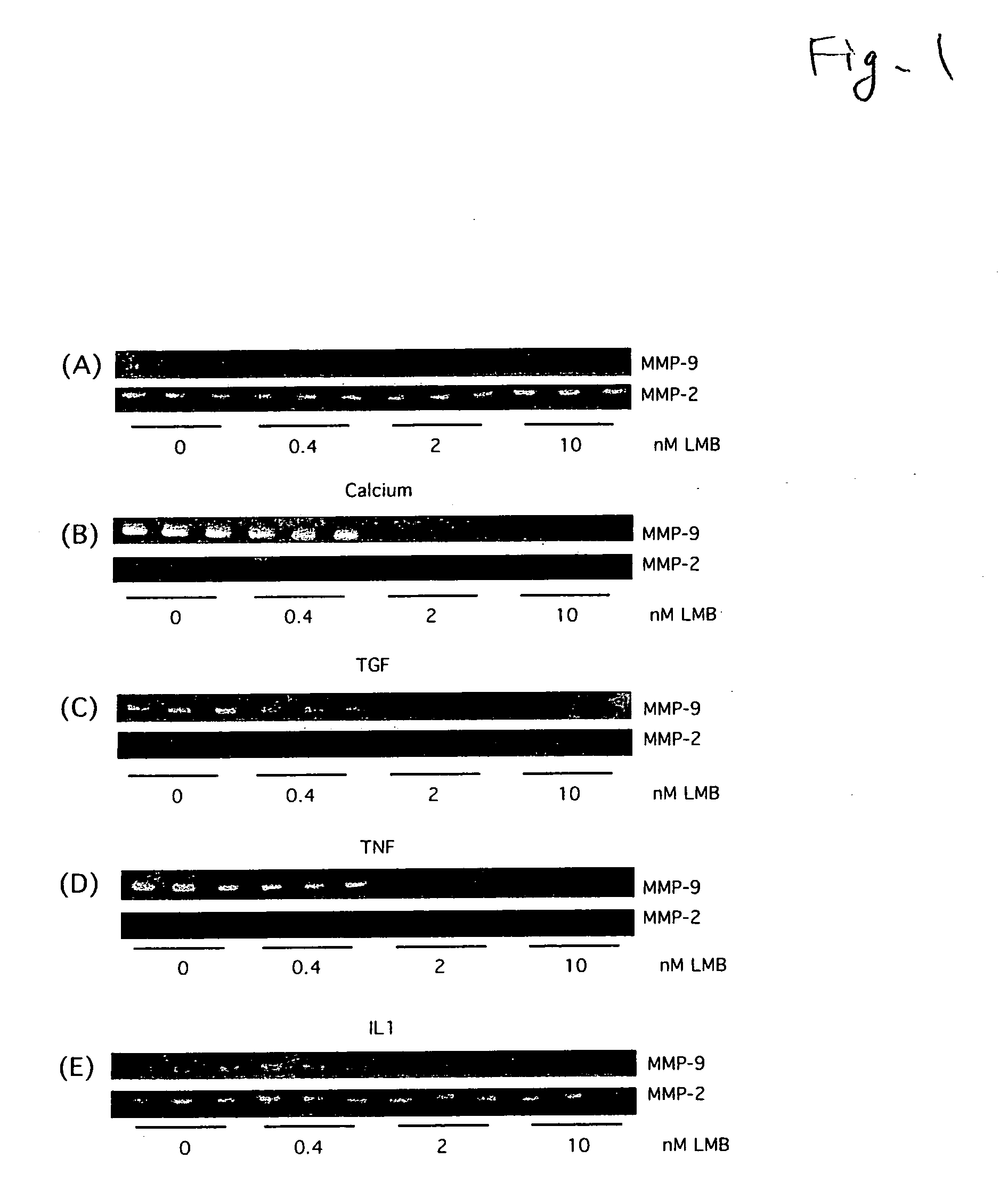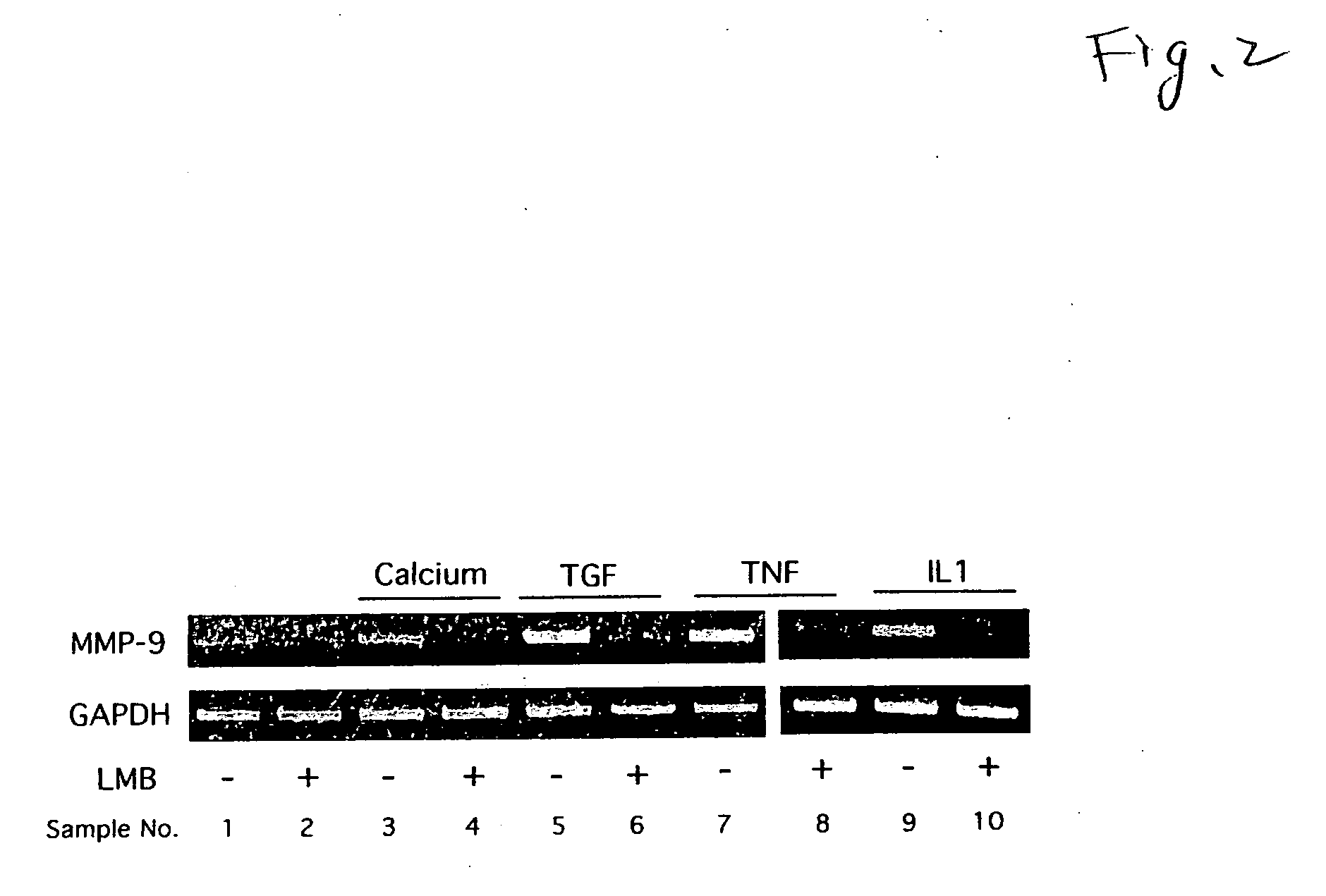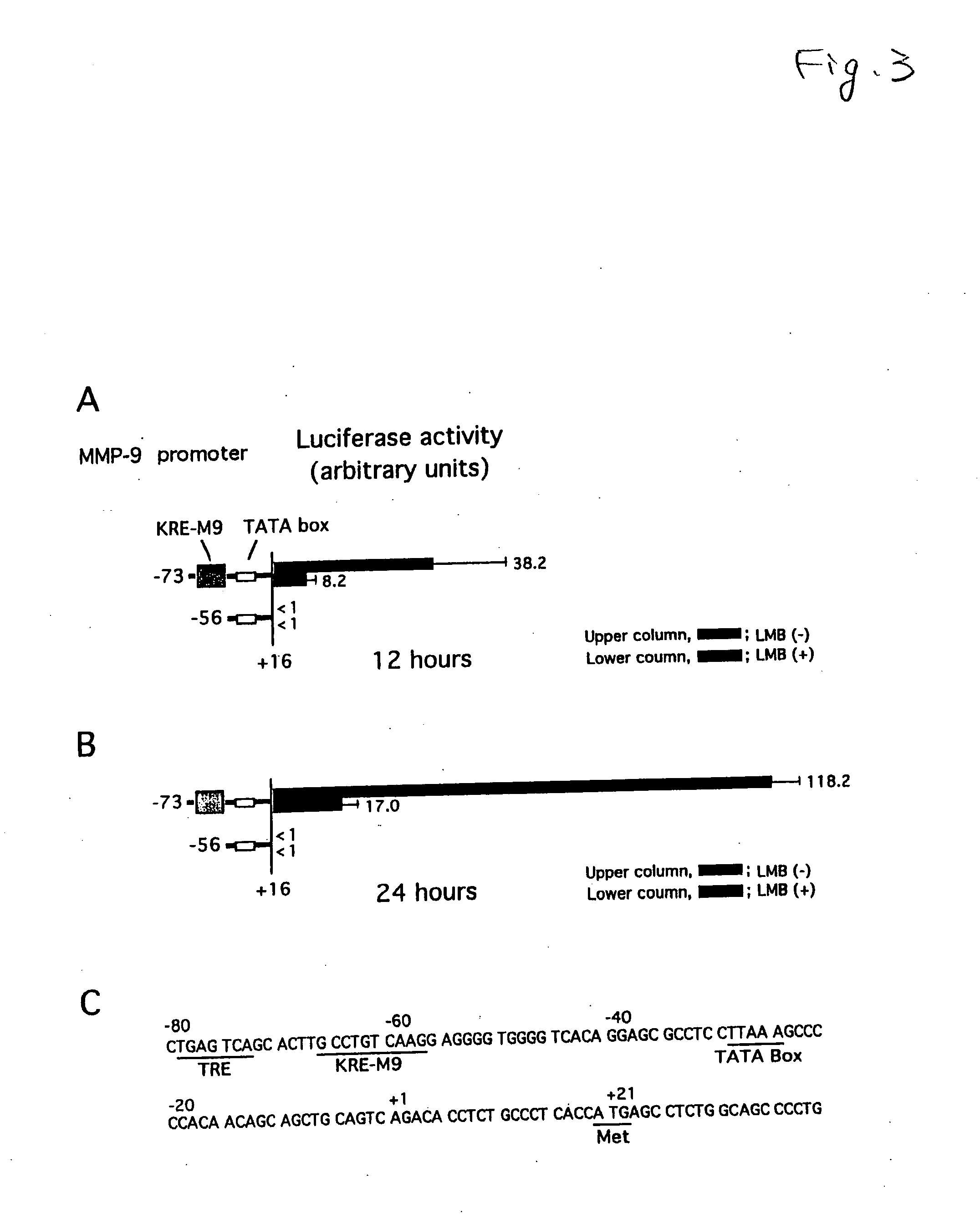Drug for Inhibiting Production of Matrix Metalloprotease-9
a technology of matrix metalloprotease and inhibitory drug, which is applied in the direction of biocide, drug composition, cardiovascular disorder, etc., can solve the problems of delay in injury healing, application other than anti-tumor agents, etc., and achieve the effect of preventing or treating metalloproteinase-9 related skin diseases
- Summary
- Abstract
- Description
- Claims
- Application Information
AI Technical Summary
Benefits of technology
Problems solved by technology
Method used
Image
Examples
example 1
[0027]The following experiment was conducted to verify that the production of MMP-9 is inhibited by LMB.
[0028]A foreskin of a neonate was treated at 4° C. for 16 hours by a disperse having a casein decomposition activity of 25.0 caseinolytic units / ml. Epidermal was peeled from dermis using a forceps, then, the epidermal was treated with 0.05% trypsin for 5 minutes. The separated human foreskin keratinocytes (HFKs) were allowed to incubate at 37° C. in a plate having a keratinocyte-SFM medium (manufactured by Invitrogen), and sub-cultured over three generations. Then, into four plates obtained by sub-culturing human foreskin keratinocytes (HFKs) over three generations, LMB was added so that the concentrations in the medium were 0 nM, 0.4 nM, 2 nM and 10 nM, respectively, further, allowed to incubate at 37° C. for 24 hours. Then, four conditioned media of the keratinocyte-SFM medium were collected from the four plates, and stored at −30° C. until use in the following detection of MMP-...
example 2
[0030]Culturing of a human epidermal keratinocyte and detection of MMP-2 and MMP-9 by a gelatin zymography method were conducted by the same manner as in Example 1 except that LMB was added into four plates obtained by sub-culturing human foreskin keratinocytes (HFKS) over three generations, so that the concentrations in the medium were 0 nM, 0.4 nM, 2 nM and 10 nM, respectively, and a calcium chloride aqueous solution was added so that the four concentrations of Ca+ in the medium were all 1.5 mM, instead of adding LMB into four plates obtained by sub-culturing human foreskin keratinocytes (HFKs) over three generations, so that the concentrations in the medium were 0 nM, 0.4 nM, 2 nM and 10 nM, respectively, in culturing of human epidermal keratinocyte. The results are shown in FIG. 1 (B).
example 3
[0031]Culturing of a human epidermal keratinocyte and detection of MMP-2 and MMP-9 by a gelatin zymography method were conducted by the same manner as in Example 1 except that LMB was added into four plates obtained by sub-culturing human foreskin keratinocytes (HFKs) over three generations, so that the concentrations in the medium were 0 nM, 0.4 nM, 2 nM and 10 nM, respectively, and TGF-β was added so that the four concentrations of TGF-β in the medium were all 1 ng / ml, instead of adding LMB into four plates obtained by sub-culturing human foreskin keratinocytes (HFKs) over three generations, so that the concentrations in the medium were 0 nM, 0.4 nM, 2 nM and 10 nM, respectively, in culturing of human epidermal keratinocytes. The results are shown in FIG. 1 (C).
PUM
| Property | Measurement | Unit |
|---|---|---|
| Therapeutic | aaaaa | aaaaa |
Abstract
Description
Claims
Application Information
 Login to View More
Login to View More - R&D
- Intellectual Property
- Life Sciences
- Materials
- Tech Scout
- Unparalleled Data Quality
- Higher Quality Content
- 60% Fewer Hallucinations
Browse by: Latest US Patents, China's latest patents, Technical Efficacy Thesaurus, Application Domain, Technology Topic, Popular Technical Reports.
© 2025 PatSnap. All rights reserved.Legal|Privacy policy|Modern Slavery Act Transparency Statement|Sitemap|About US| Contact US: help@patsnap.com



